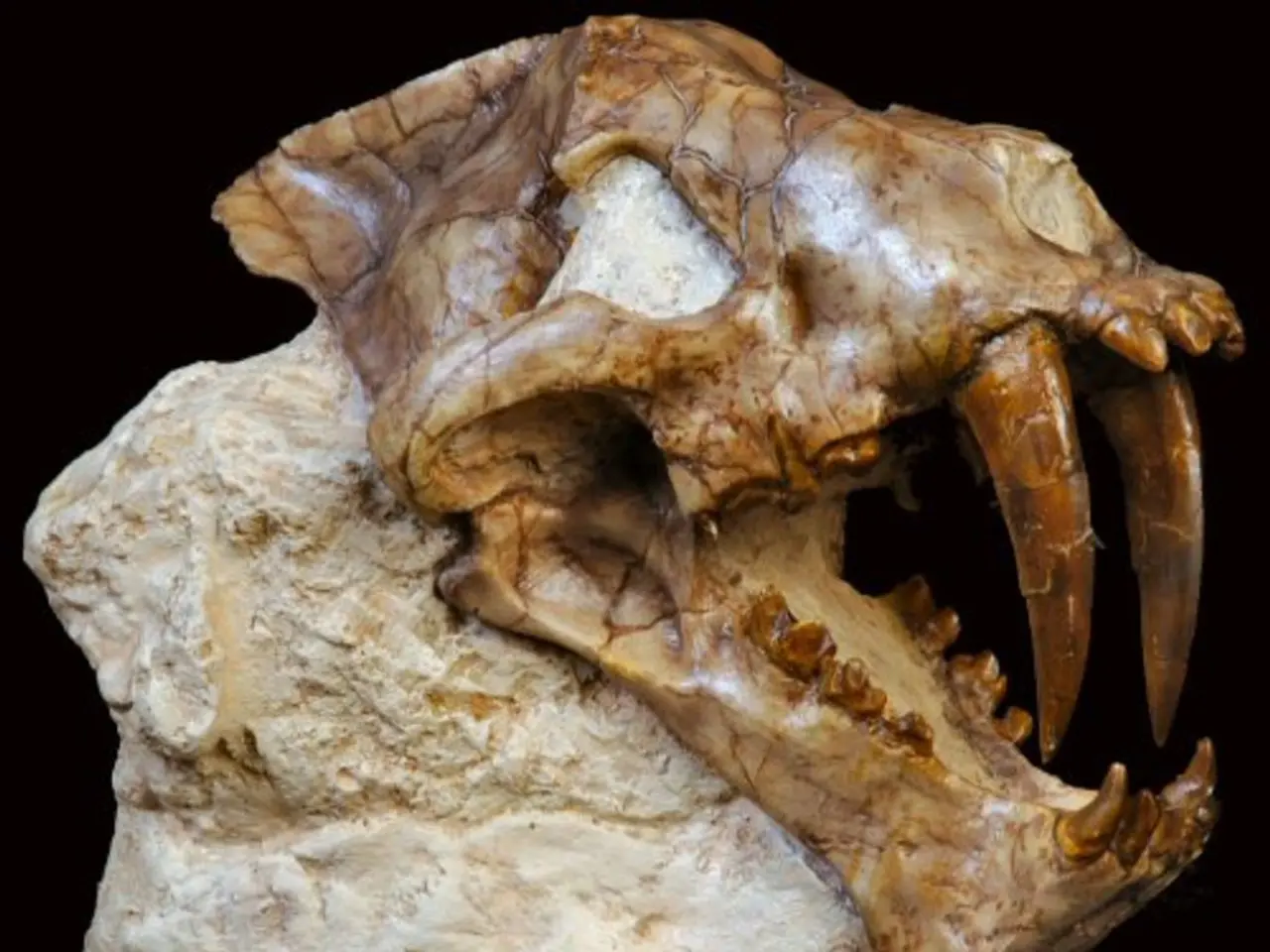Janjucetus dullardi: A Newly Discovered Prehistoric Whale
Fossil discovery reveals ancient whale species with shark-liked teeth dating back 26 million years
In a groundbreaking discovery, scientists have unearthed a new species of ancient whale in the Jan Juc Formation on Victoria's Surf Coast in Australia. The species, named Janjucetus dullardi, was discovered in fossil fragments found by local resident Ross Dullard in 2019[1][3][4].
The fossil was formally described by scientists at the Museums Victoria Research Institute and published in the Zoological Journal of the Linnean Society[3][4]. Janjucetus dullardi is described as a "little whale with big eyes and a mouth full of sharp, slicing teeth," making it a shark-like version of a baleen whale[1][2][3].
This newly discovered species lived around 26 million years ago during the Oligocene Epoch and forms a key link in the evolutionary chain from early carnivorous whales to the filter-feeding baleen whales that dominate today's oceans[2]. It had a short snout and large forward-facing eyes, about the size of tennis balls, which would have aided in hunting[2][3]. The species was compact, about two meters long, similar to a dolphin, and was a fast predator built for hunting[1][3].
Paleontologist Erich Fitzgerald, who co-authored the study, stated that the region was once a cradle for some of the most unusual whales in history, and they are only just beginning to uncover their stories[2]. The discovery highlights the importance of the Jan Juc Formation, a geological hotspot for early whale evolution, potentially leading to more significant discoveries about whale evolution in the region[1][4].
Janjucetus dullardi represents a transitional phase in whale evolution, providing clues about how early predators eventually evolved into the gentle, filter-feeding giants we see today[2][3]. Its discovery helps fill a missing chapter in understanding how whales transitioned from being carnivorous to filter-feeding animals[2]. The discovery of this species opens a window into how ancient whales grew and changed, and how evolution shaped their bodies as they adapted to life in the sea.
The Jan Juc Formation, a geological feature dating to the Oligocene epoch between 23 and 30 million years ago, has yielded a string of rare fossils. The discovery of Janjucetus dullardi is rewriting the story of how whales came to rule the oceans, with some surprising plot twists. As Fitzgerald mentioned, they are entering a new phase of discovery[2]. The region's unique geology and fossil record continue to offer valuable insights into the early evolution of whales.
[1] Museums Victoria. (2021). Newly discovered ancient whale species named after local resident who found fossil. Retrieved from https://www.museumsvictoria.com.au/media/media-releases/newly-discovered-ancient-whale-species-named-after-local-resident-who-found-fossil/
[2] Fitzgerald, E. M., et al. (2021). A new mammalodontid whale from the Oligocene of southern Australia and the evolution of filter feeding in whales. Retrieved from https://academic.oup.com/zoolog/article/306/3/zabaaaab145/6005530
[3] ABC News. (2021). Newly discovered ancient whale species named after local resident who found fossil. Retrieved from https://www.abc.net.au/news/2021-05-05/ancient-whale-species-discovered-in-victoria/100195180
[4] The Conversation. (2021). A new species of whale with razor-sharp teeth has been discovered in Australia. Retrieved from https://theconversation.com/a-new-species-of-whale-with-razor-sharp-teeth-has-been-discovered-in-australia-163953
In the realm of science, this significant discovery of a prehistoric whale, Janjucetus dullardi, highlights the connections between health-and-wellness, fitness-and-exercise, and evolution, as its large, forward-facing eyes and compact, fast body suggest a keen predator preference for active hunting during the Oligocene Epoch. This newfound species, with its shark-like and baleen whale-like features, is a fascinating link in the health and wellness journey of marine life, demonstrating the transition from carnivorous predators to filter-feeding giants.




